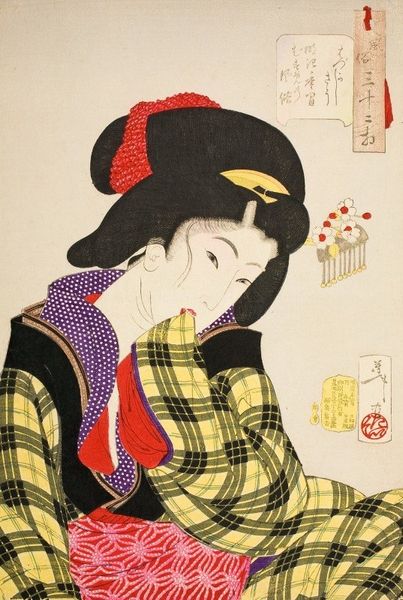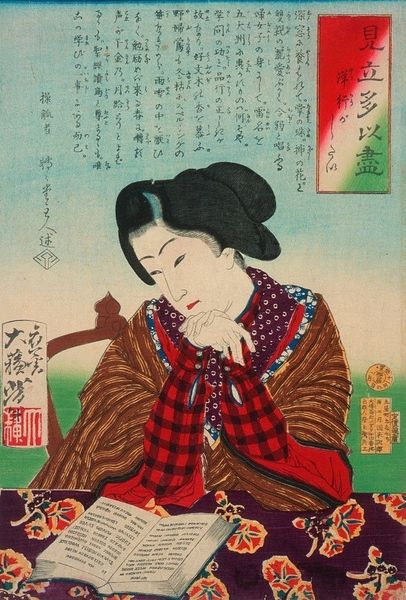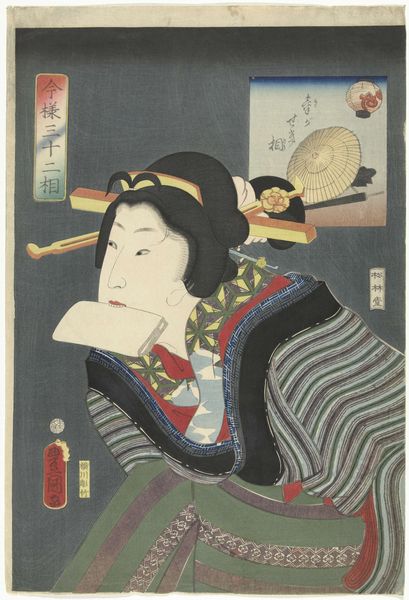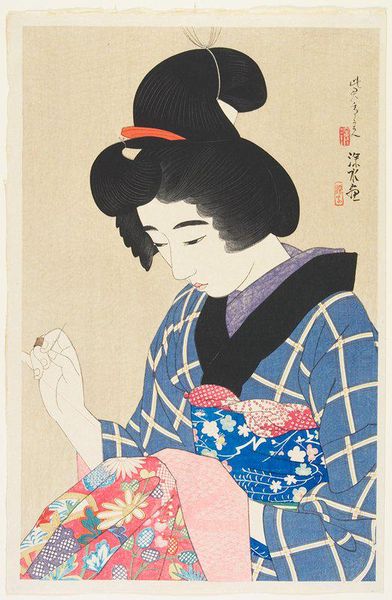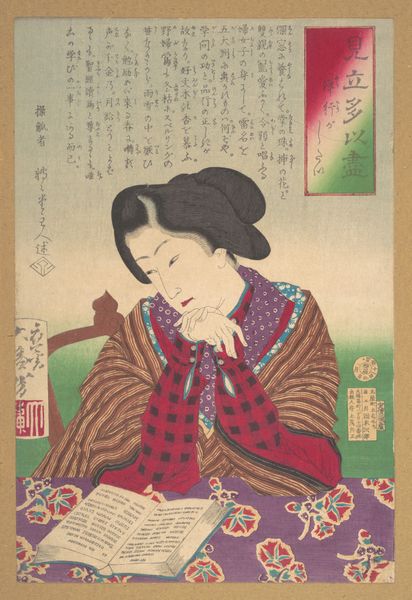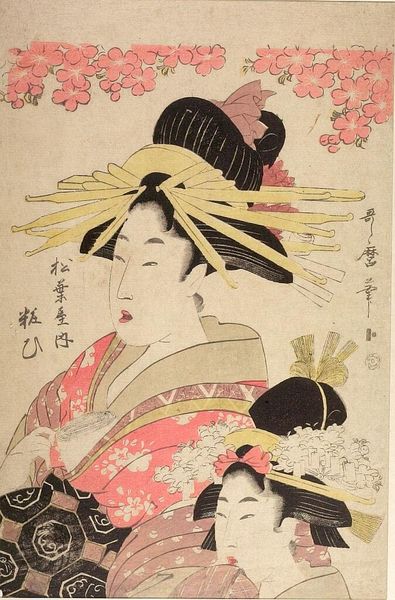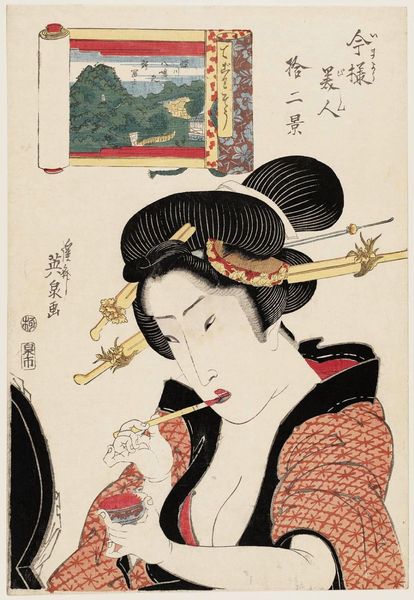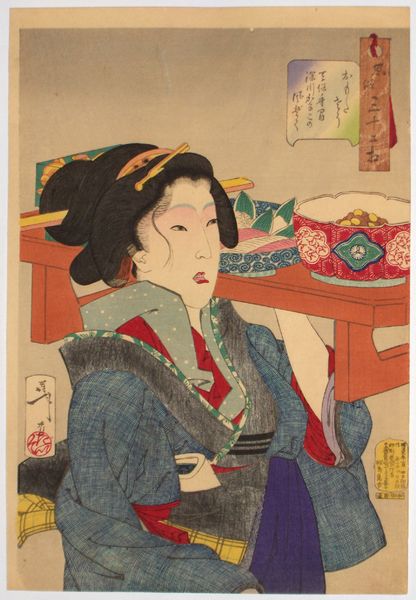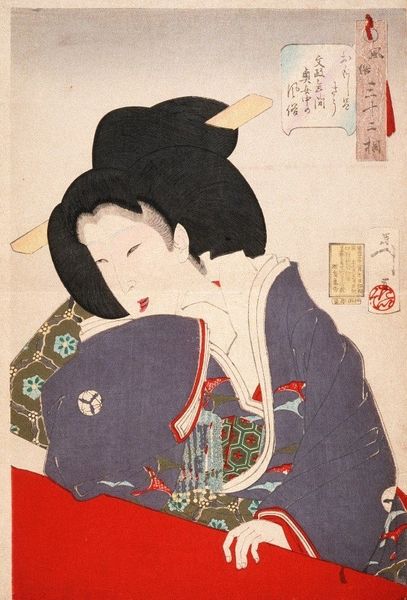
#
portrait
#
childish illustration
#
retro 'vintage design
#
handmade artwork painting
#
historical fashion
#
watercolour bleed
#
watercolour illustration
#
cartoon style
#
cartoon carciture
#
cartoon theme
#
female-portraits
#
watercolor
Copyright: Public domain
Curator: The artwork we're observing is a woodblock print by Tsukioka Yoshitoshi, created in 1888. It’s entitled "Looking Shy - The Appearance of a Young Girl of the Meiji era." Editor: It has a rather melancholic quality, wouldn't you say? The heavy lines, the girl’s averted gaze… There's a stillness and quiet sadness that is very present here. I find it almost stifling. Curator: That melancholic mood, I think, speaks to the transitional period of Meiji Japan. Yoshitoshi often grappled with themes of cultural shift, and this portrait could be interpreted as a commentary on the changing roles and expectations placed on young women at the time, caught between tradition and modernity. Editor: The very textiles she wears reflect that tension! Look at the elaborate hair ornaments juxtaposed with the quite loud, almost clashing patterns of her robes. The fabric is clearly machine-made, unlike traditional garments that would have been woven entirely by hand, by individual artisans and cottage industries. Curator: Exactly. Considering the historical context, the artist likely selected these details deliberately. The girl’s posture and downcast eyes, coupled with the mixing of traditional and modern fashion elements, invite us to consider the complex negotiations of identity in Meiji society. Was it a deliberate commentary by Yoshitoshi on gender roles during modernization, given his awareness of social issues and perhaps proto-feminist attitudes? Editor: I agree, the work certainly makes us question access to material, class and generational expectations. One can almost sense the weight of her garment; heavy cloth laden on a child—how many hours went into producing that print, and by how many people? And for what end use? How much of that labor reflects power, how much simply a process for sales and economic benefit? Curator: Absolutely. By analyzing Yoshitoshi’s artistic choices and acknowledging the era's historical pressures, we gain insight into a moment of upheaval—a visual document expressing the anxieties and ambivalences of a society undergoing massive transformations. Editor: Yes, considering the process, labor, and sheer volume of work, both in raw materials and artistic creation, in connection with the societal flux, renders it a striking snapshot of Japan’s evolving identity. It truly gives us pause.
Comments
No comments
Be the first to comment and join the conversation on the ultimate creative platform.
